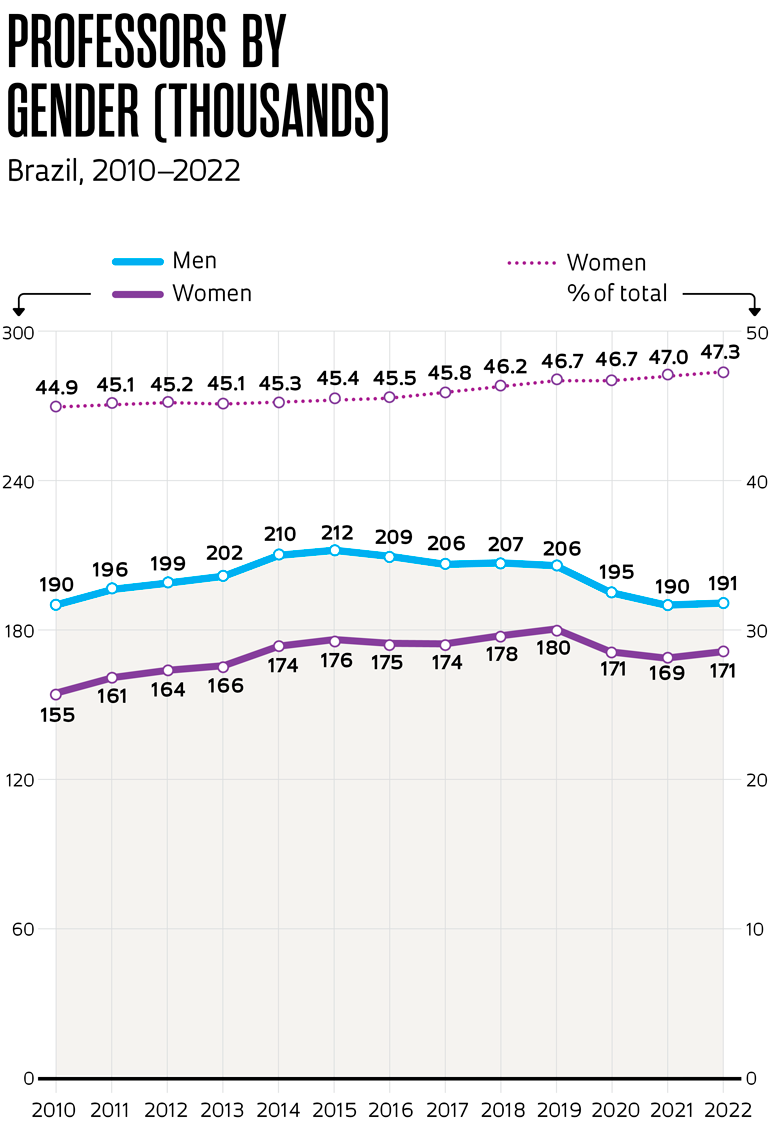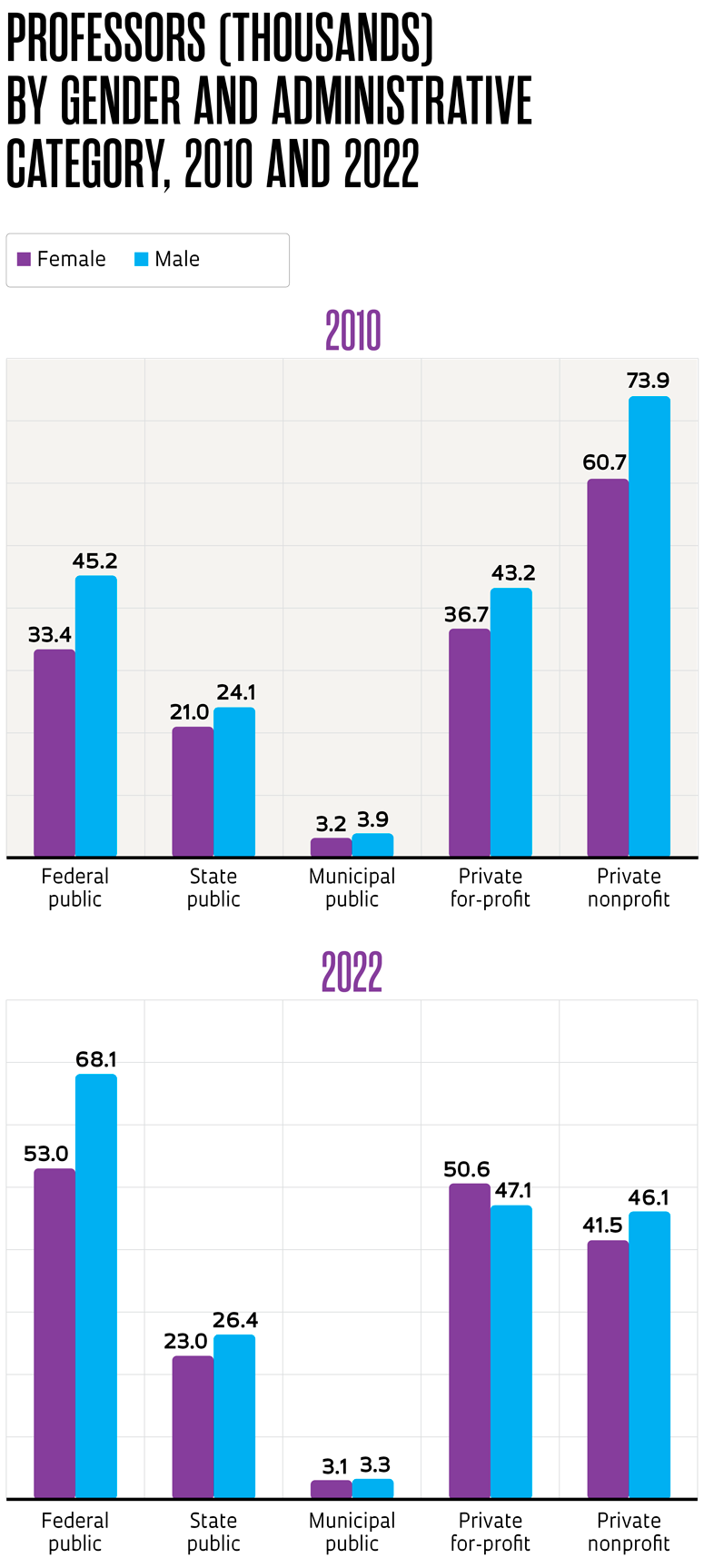- The proportion of teaching roles in higher education held by women has been rising slowly but steadily since 2010. In 2022, of 362,000 teaching positions at higher education institutions in Brazil, 171,000 (or 47.3%) were held by women. Although the absolute number is not as high as it once was (peaking at 180,000 in 2019), the proportion of positions held by women has continued to rise to its current highest level on record
Data
Women in higher education

- In the same timeframe, there was a significant increase in the number of professors at federal educational institutions: from 45,200 men to 68,100, and from 33,400 women to 53,000. As a result, the proportion of female professors at these institutions rose from 42.4% to 43.7%

- In state institutions the absolute increase in the same period was small for both men and women, with no change in the proportion of each gender: 53.4% for men and 46.6% for women. In the municipal system, despite the absolute figures being relatively low, female representation increased from 44.8% to 48.2%
- Among private nonprofit institutions, there was a significant drop in the number of teaching positions (from 134,000 to 98,000) and a small increase in participation by women (from 45.1% to 47.4%)
- For-profit institutions, meanwhile, experienced the greatest growth in the period (in number of enrollments1). The number of teaching roles increased from 80,000 to 98,000 and women occupied more of them than men, rising from 45.9% to 51.8%
Note(1) The number of enrollments at private for-profit institutions increased from 2.1 million in 2010 to to 5.6 million in 2022. The ratio of enrollments to teaching positions increased from 26 in 2010 to 58 in 2022. As a comparison, this ratio in the other systems in 2022 is: federal – 11; state – 13; private nonprofit – 20. In the latter, the figure is highly influenced by the large number of enrollments via distance learning (2/3 of enrollments) Source Microdata from the INEP/MEC Higher Education Census (accessed on 02/06/2024) Prepared by Studies & Indicators Team, DPCTA/FAPESP
Republish